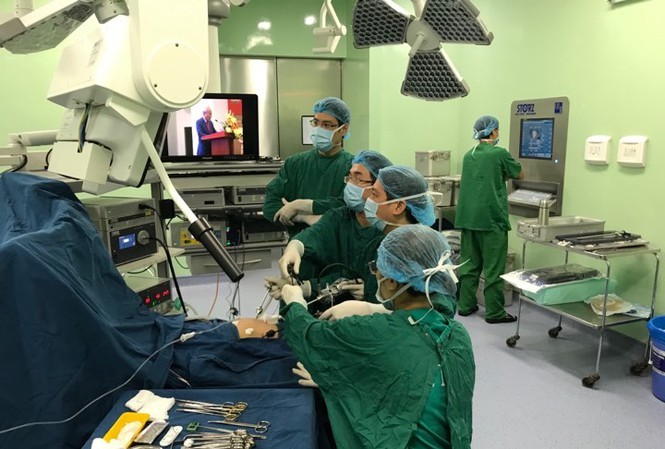 |
|
|
Vietnam National Hospital of Pediatrics opened the first OR1 smart integrated operating room on November 18, Tien Phong newspaper reported.
The OR1TM system is designed not only to perform surgical procedures, but also to deliver results that enhance work efficiency, better exchange information in the team, optimize work flow, minimize surgery duration, and reduce waiting time between surgeries.
Besides, seminars, tele-conferences and training can be conducted thanks to an audiovisual network, two-way information transmission which is integrated and synchronized from the operating room with the hospital’s information system via Local Area Network (LAN).
Thanks to this application, the data of each surgery is stored on the spot with AIDA storage system with high security. Especially, by current technology, the ability to store data will be implemented in both 2D and 3D image formats as well as image storage from different revenue sources.
According to MedicalExpo e-magazine, operating rooms are now more and more “integrated”, with improvements in high-resolution imaging equipment and the enhanced ability to use large amounts of visual OR data.
It means that all the operating room technology - patient information systems, audio, video, lighting and medical equipment - is functionally connected, enabling a surgeon to control all these devices from a single touch screen.
“At the moment, innovations for interventional procedures are seen as particularly important. In the case of modern surgery procedures, an ‘integrated’ approach is in demand,” MedicalExpo quoted Joachim Schäfer, managing director of Messe Düsseldorf, as saying.
“Integrating all aspects of control within the operating room through a simple user interface with quick access to presets such as surgical lights and insufflations, will help standardize workflow and provide more patient care during surgery,” David Delgado, Product Manager at Olympus, told MedicalExpo.
Sam Glassenberg, founder and CEO of Level EX, the Chicago-based developer of surgical training apps, said the primary driver for new, integrated OR technology is minimally invasive surgery.
“By performing these procedures via remote camera/endoscope, doctors can achieve improved patient outcomes with fewer complications,” he explained. Hanoitimes
Anh Kiet
 In the case of modern surgery procedures, an ‘integrated’ approach is in demand.
In the case of modern surgery procedures, an ‘integrated’ approach is in demand.